Hospitalist care with a personal touch
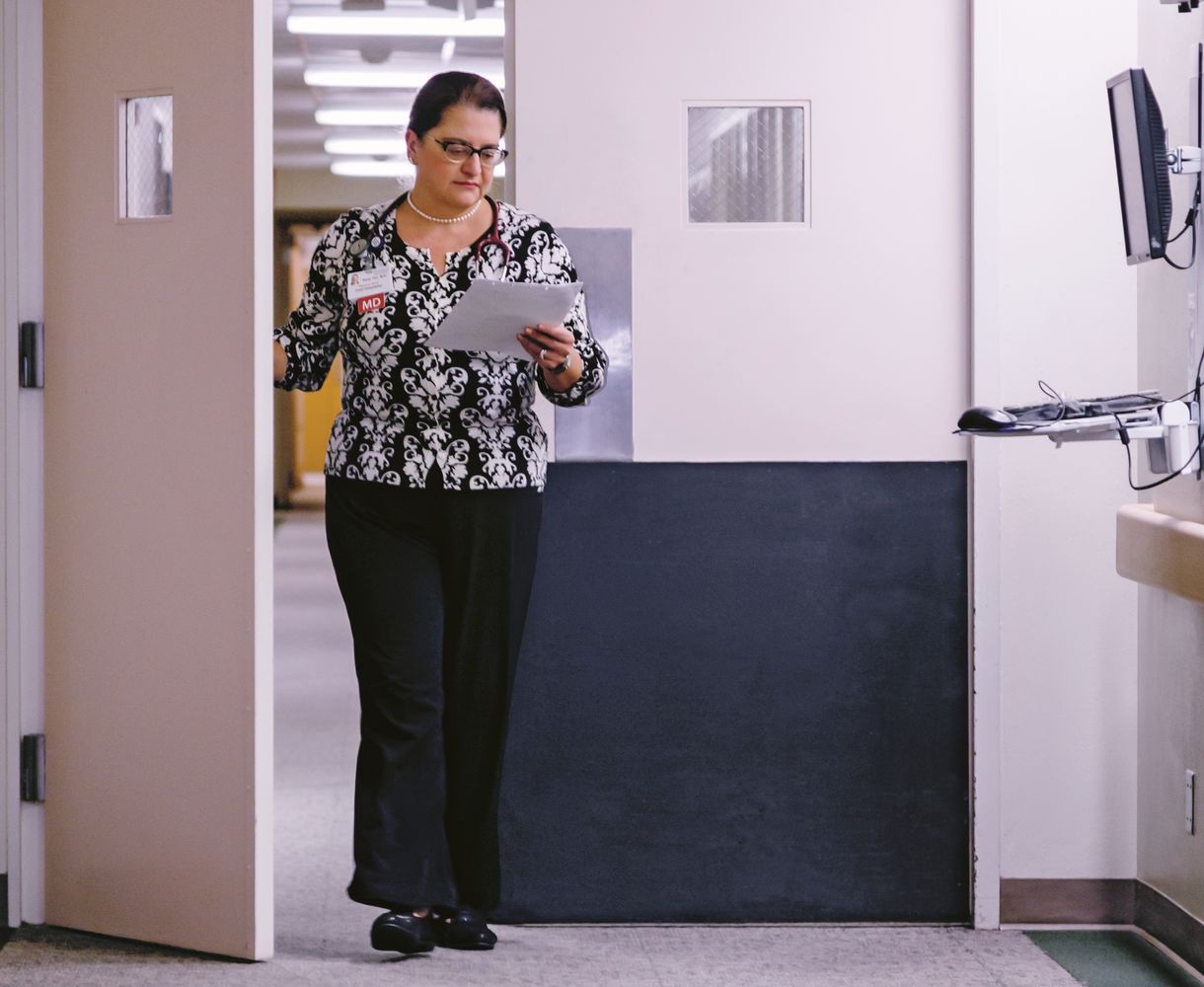
Dr. Rana Tan
A day in the life of hospitalist Dr. Rana Tan
Hospitalists serve as a crucial link between patients, the hospital and their primary care physician, ensuring that care is delivered in good time, safely, efficiently — and with the personal touch that is so important when lives are at stake. Snapshots from a day in the life of Dr. Rana Tan, one of Sound Physicians’ chief hospitalists.
5:00 a.m.: Pre-rounding at home
By 5 a.m., two hours before her 12-hour shift at Bremerton’s Harrison Medical Center begins, the doctor is already on her computer and doing what she calls “pre-rounding”, or creating a mental map of who requires what attention this particular day.
Dr. Tan works fast and methodically, flagging the most critical cases for a closer look once she gets to work and preparing the files of others for discharge to make sure that patients leave the hospital by 10 a.m.
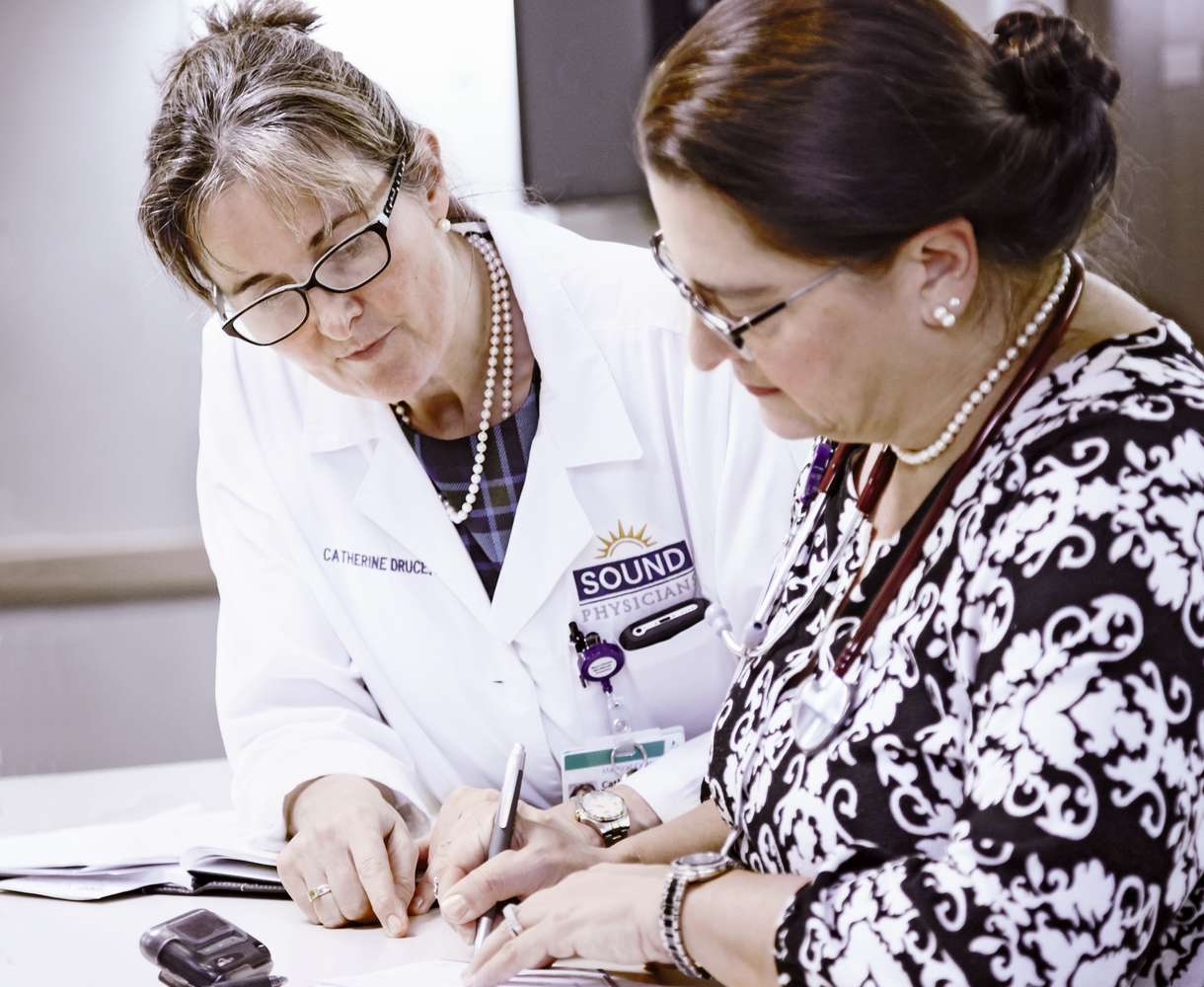
7 a.m.: Census time
The day shift begins for Dr. Tan and the five other Sound physicians. They gather in their meeting room to map out the schedule. As chief hospitalist, Dr. Tan cares for around 15 patients personally, but she also keeps an eye on the progress of patients under the care of other doctors on her team.
A hospitalist is a relatively new medical specialty, dating back to the early 2000s. It refers to a physician whose practice is dedicated entirely to the care of hospitalized patients.
Physicians like Dr. Tan have no practice outside the hospital itself but instead focus on providing the best possible care for patients in the hospital from admission to discharge. Sound Physicians is one of the early leaders in the field. In 2014, Fresenius Medical Care acquired a majority stake in the nationwide practice.
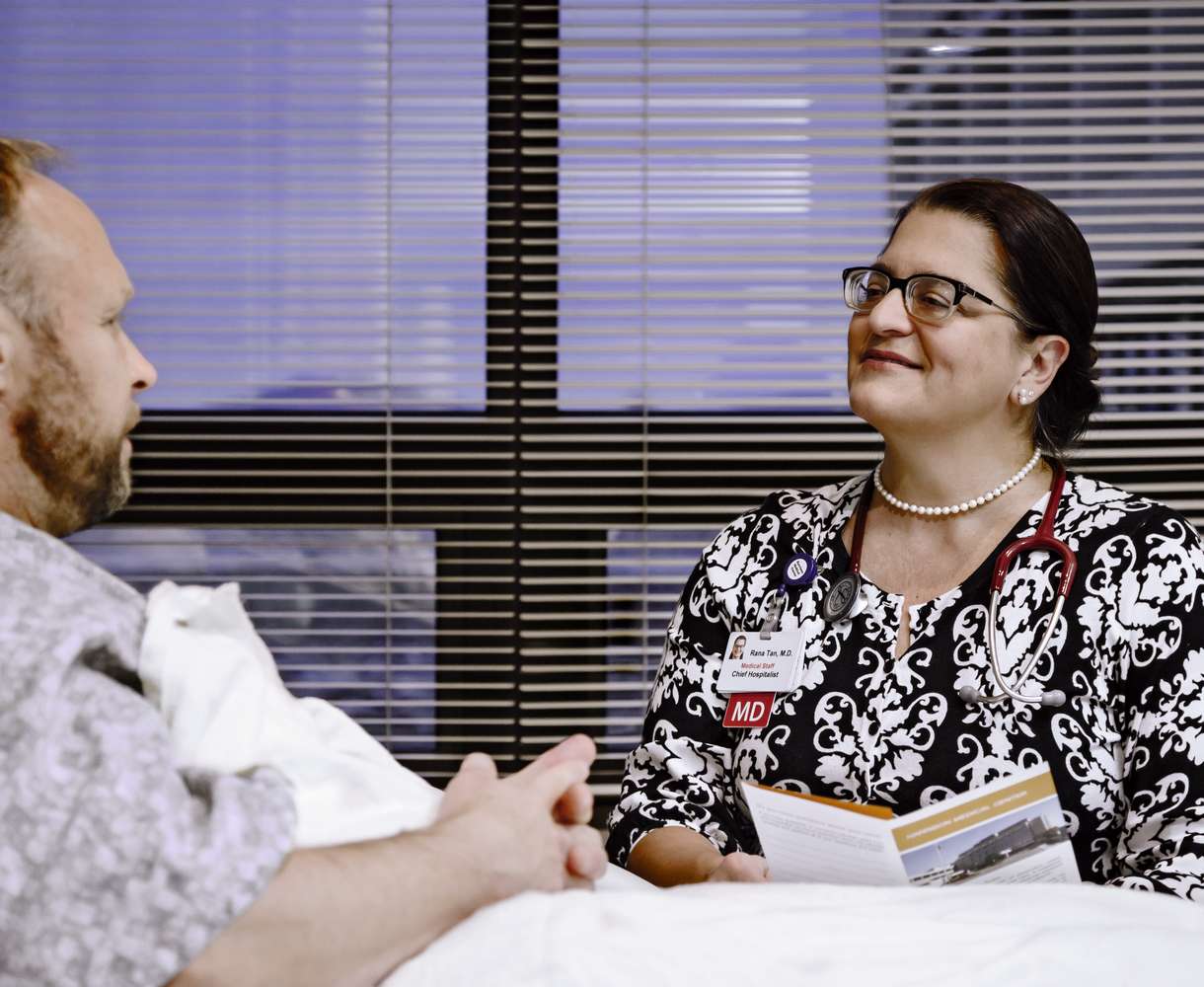
9:30 a.m.: The colors of the day
Dr. Tan checks her smartphone for new messages by the workstation at the second floor nursing station. She returns some calls before continuing visits with the patients assigned to her care that day.
How to make the most of a physician’s time is an art that Dr. Tan has turned into a science since becoming a hospitalist in 2005.
Dr. Tan introduced a system whereby each patient is assigned to one of six teams that correspond to a hospitalist on duty that week. Each team’s patients are grouped in close geographical proximity, if possible on the same floor, to minimize travel time. Color codes are used to identify the teams. “The color codes make it easy to decide who looks after whom,” says Dr. Tan. She carries the color grid printed on a credit-card-sized badge with her at all times.
The system ensures that her staff is never too far away from their patients.

11 a.m.: Discharge
At this time, Dr. Tan has already cleared seven patients for discharge, meaning they can either return home or move to a post-acute care facility such as a skilled nursing facility before noon.
“If you plan for discharge the moment a patient comes in, you can care for more people more efficiently,” explains Dr. Tan during a rare breather in her schedule.
After all, raising the hospital’s acute care outcomes and economic performance is one of her other core competencies.
12:30 p.m.: Bedside patient feedback
The eyes and ears of Dr. Tan’s team is Catherine Druce-Smith, one of Sound’s hospitalist registered nurses. She is the central communication link between the hospitalist teams, patients and the hospital. This unique nursing role focuses on driving meaningful improvements in the care of patients and the hospital under the hospitalist service. Part of this work includes conducting a bedside patient feedback survey daily, inquiring about the patients’ condition, needs and worries. Druce-Smith gathers and relays this input to the hospitalists. “Feedback is extremely important to help us do our job better,” explains Dr. Tan.
Feedback is extremely important to help us do our job better.
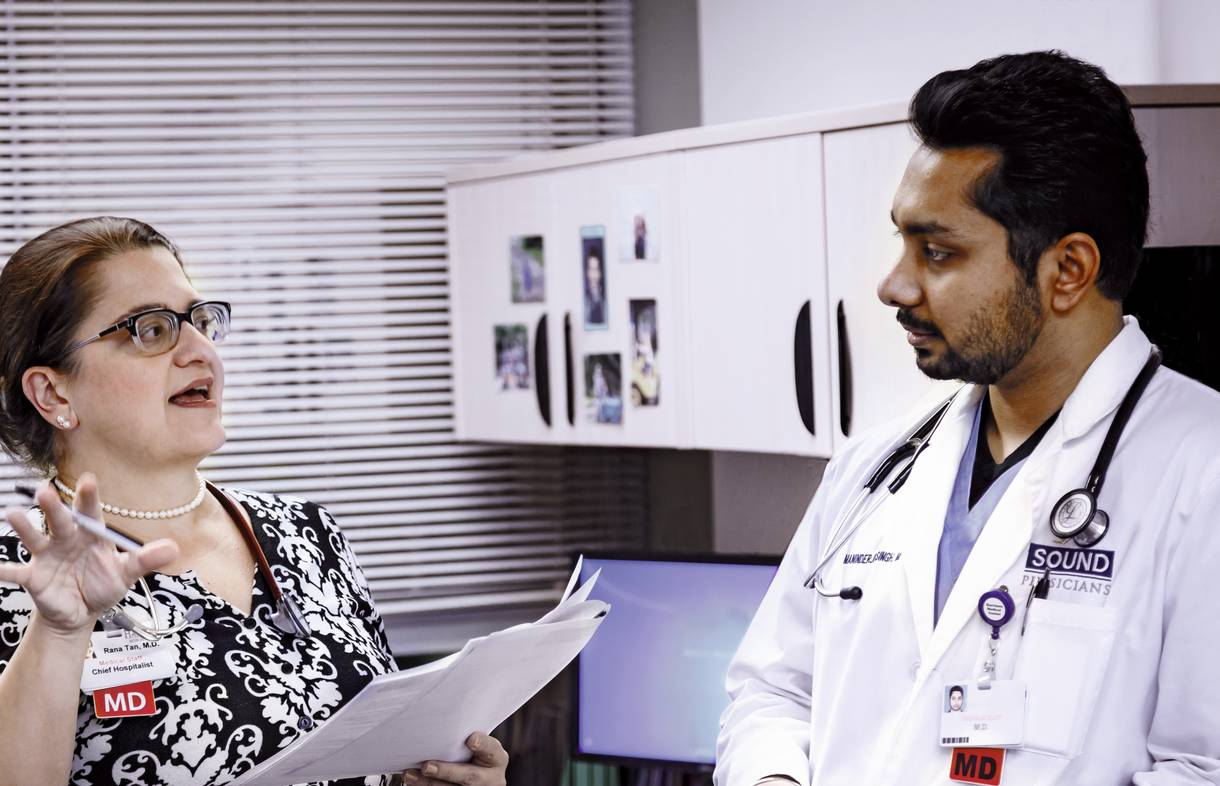
3:55 p.m.: Discussion room
Another innovation Dr. Tan has created are several small, dedicated workspaces for hospitalists right around the corner from the nurses’ desk on each floor.
She stops by one such room on the third floor to review the medical records, images and lab tests for a stroke patient with serious hemorrhaging.
She discusses possible treatment approaches with the hospital staff.
Each hospitalist works with a team comprising specialty physicians and other hospital staff, plus a case manager and social worker who help address issues that patients experience outside the hospital.
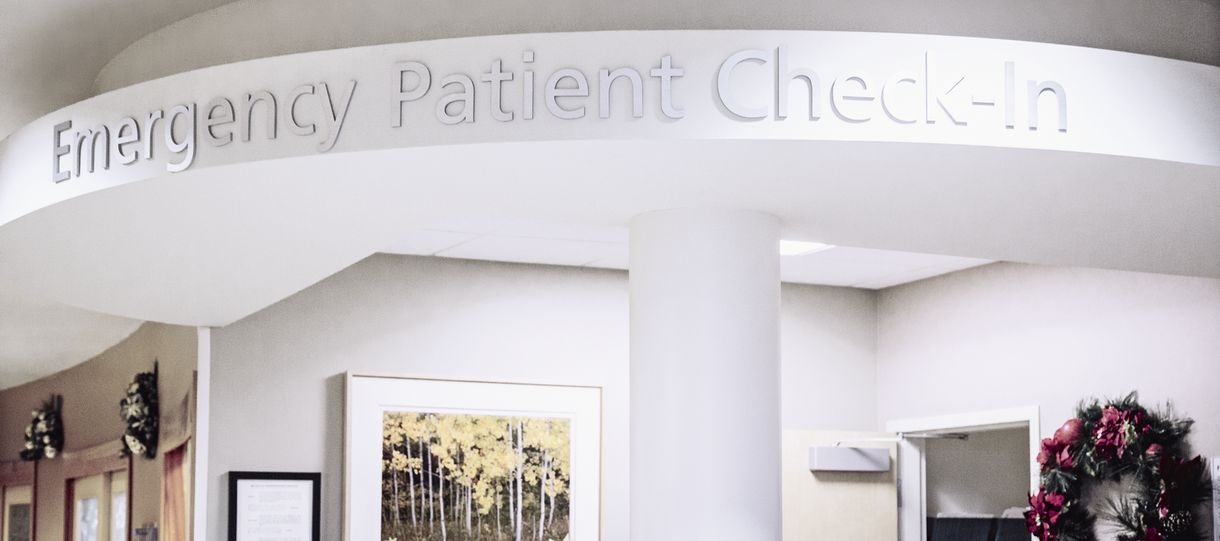
6:00 p.m.: Emergency department
It’s just past peak time for admissions at the emergency department. Dr. Tan takes a trip to the ground floor to confer with the “admitter”, a hospitalist dedicated to evaluating every new patient coming in.
The evening has snuck up on her, and Dr. Tan stops by a workstation to update her documentation, coding and billing records. As a physician who is not limited to one department, specialty or floor, she has a unique view of the entire workflow of a hospital, allowing her to drive changes in quality and performance. Keeping accurate notes and assigning diagnosis codes correctly helps hospitals perform better, since they are reimbursed depending on the proper diagnosis and performance metrics including readmission rates. More detailed and precise records mean that administrators can bill more accurately for the ailments diagnosed and care provided.

